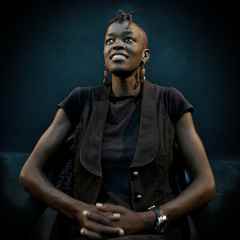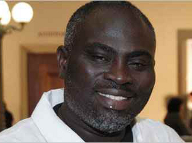Art & Architecture at Work in Urban Africa
UN Habitat and Directorate General for Development and Cooperation (EuropeAid) Unit B4
Event details
Description
Pre-Event Information
The objective of Art & Architecture at Work at the 24th UN Habitat Governing Council Meeting is to promote the role of art and architecture at the service of inclusive and sustainable urban development in African cities.
Bottom-up initiatives, participatory approaches, and community involvement are increasingly valued in urban planning. Artists and architects together bring significant input to the process. Through the investment of public spaces, public art, and public architecture, they can engage civil society towards cultural ownership of the city and steer urban growth towards sustainable and inclusive patterns, alongside state-driven initiatives.
Art & Architecture at Work presents recent best practices in Africa, as models to be encouraged as part of the urban planning processes.
Side Event Summary: Wednesday April 17, 2013, 13:30-14:30
The side-event presented on April 17, 2013 at the 24th UN Habitat Governing Council Meeting derives from UN Habitat’s participation in a regional conference organized by the European Commission (EC)/BOZAR (the Belgian Centre for Fine Arts) during the ‘Art at Work’ Kampala edition in September 2012.
This side-event, prepared by the EC/BOZAR, advocated the role of artists and architects in inclusive and sustainable urban development.
Heinrich Wolff discussed the architect’s role in situations where the city is largely developed without design professionals. He argued for the necessity of architecture and a working method in which architects can contribute to social change, and the need for a labour-absorbent architecture, the reduction of energy use, the role of infrastructure and the necessity to contribute to contemporary urban culture.
Joy Mboya presented projects of the GoDown showing how the cultural sector can be involved in sustainable urban development, in particular for the mobilisation of stakeholders and beneficiaries of inclusive and participatory urban processes. Shukisha Nairobi: Common Ground, a neighbourhood development project, and Nai ni Who: a people-driven city-wide festival. Mboya shared partnership and leveraging strategies used, and stressed the importance of building legitimacy and acting as convening agency for diverse actors and issues.
Joe Osae Addo delivered the concluding remarks, encouraging UN Habitat to:
- reinforce its mandate by watching, learning from, and documenting successful, inclusive, bottom-up, urban culture-based, asset-focused initiatives that foster re-imagining the city, cultural diversity, and cultural confidence and harmony among citizens;
- bridge the gap between civil society and national urban policies by showcasing these types of models;
- develop context-based narratives for sustainability.
UN Habitat Nairobi thanked EC/BOZAR for this side-event and its important theme (‘art and architecture need to be mainstreamed in the urban realm’), agreed to a follow-up on this high-level debate organised by the EC/BOZAR at the European Development Days later this year in Brussels, proposed to facilitate a larger presence at the World Urban Forum in Medellin in 2014, and to discuss this theme’s place in the 25th Gvoerning Council Meeting, 2015 and Habitat III, 2016.
The keynote presentations on Art and Architecture in inclusive and sustainable urban development in Africa were devliered by:
1. Joy M’Boya, Director, GoDown Arts Center, Nairobi.
Joy M’Boya (Kenya) is the Executive Director of The Performing & Visual Arts Centre Ltd, popularly called The Godown Arts Centre, a nonprofit facility providing subsidized space and residency opportunities for Kenyan artists and presenting artistic public programs for local audiences. She is a Trustee of Gaara Dance Foundation (Kenya) whose aim is to develop contemporary African dance. She is also a Trustee of the Kalasha Film Awards (Kenya). She has served on the Board of Trustees of Action for Music. In 2004, she received the National Women's Council of Kenya 2004 Merit Award for her contribution to the development of the performing arts. Through appointment by the Minister of Gender, Sports, Culture and Social Services, she has served on the Governing Council of the Kenya Cultural Centre, under which falls the Kenya National Theatre. Joy worked for 7 years as an architectural designer with a practice in Nairobi. At the same time, she joined the Kenyan pop band Musikly Speaking as lead singer. In 1993, she re-located temporarily to Sydney, Australia where she pursued post-graduate studies in Voice at NIDA. She returned to Nairobi, Kenya in the late '90s and initiated a training program in performance-making for young people aged 15 to 22 years. This organization, Fame Trust, was among the 'founder' groups of a communal arts space concept, which was finally realized as The Godown Arts Centre. In the last year, GoDown Centre for the Arts has been engaging the various stakeholders of its neighborhood, including artists, into a discussion on visions for Nairobi in 2013. Architects are currently interpreting these visions, for presentation to the city starting May 2013. In recognition of this inclusive, multidisciplinary approach, the GoDown Arts centre has recently been considered for UN Habitat partner status.
2. Heinrich Wolff, Architect, Cape Town.
Heinrich Wolff (South Africa) Heinrich Wolff formed Wolff Architects with his wife Ilze. The recently formed design studio is concerned with developing an architectural practice of consequence through the mediums of design, advocacy, research and documentation. Heinrich’s work has been exhibited internationally, the most significant exhibitions being the Venice Biennale (2006 & 2010), the Sao Paulo Biennale (2005 & 2007) and the South American Architecture Biennale – Ecuador (2008). In 2011 Heinrich was selected as the Designer of the Future by the Wouter Mikmak Foundation (Netherlands). In 2007, he won the prestigious DaimlerChrysler Award for South African Architecture. With Jo Noero, Heinrich received the Lubetkin Award in 2006 from the RIBA for the best building in the world (outside the EU) for the Red Location Museum of Struggle in Port Elizabeth. He has won several other international and South African awards for excellence in design, most notably for public buildings such as schools and hospitals. Heinrich has taught at universities in South Africa and in the USA and currently holds an adjunct associate professorship at the University of Cape Town. He is also a founding member of Docomomo South Africa, an organization dedicated to documentation and conservation of Modern Architecture. Some of his projects include the Inkwenkwezi Secondary School (2006), The Red Location Museum of Struggle (2005), the Usasazo Secondary School (2003) and the Vredenburg Hospital (current). Heinrich Wolff is deemed an important voice for inclusive urban planning process in Africa, thanks to his experience and close involvement with a range of public, cultural, educational, and health architectural projects in South Africa
3. Joe Addo, ArchiAfrika, Accra
Joe Osae Addo (Ghana) trained at the Architectural Association in London. He worked in Finland, the UK and the USA, setting up his practice in Los Angeles in 1991. His work has been influenced by ‘genus-loci’, and how architecture can/should respond to this in creating pieces which are both site specific and meet the needs of people who will interact with it. He is a founding partner in the A + D Museum, Los Angeles, whose mission is to advance knowledge and to enable people to appreciate and understand architecture and design.
He moved back to his native country Ghana in 2004 and is currently the CEO of Constructs LLC, an inno-native design firm based in Accra and Tamale in Ghana, West Africa. Ado is on the Board of ArchiAfrika, the network for African architecture, and directs the network base recently moved to Accra. He and his network are valuable resources for those advocating local inspirations and solutions in urban plannign processes.
Exhibit: Art and Architecture in inclusive and sustainable urban development in Africa
More information coming soon.
For more information including a copy of the agenda, please visit the official UN-Habitat event website.
Related documents
The ESSENTIAL BOOKLET Art & Architecture at Work
English (1.76 MB - PDF)Art & Architecture at Work in Urban Africa - banners
English (846.15 KB - PDF)Statement on behalf of the EU and its Member States
English (19.53 KB - PDF)Press Dossier 24th UN Habitat Governing Council Meeting
English (328.94 KB - PDF)Art and Architecture at Work Nairobi Side Event
English (176.07 KB - PDF)Art at Work Kampala - Press Dossier
English (330.17 KB - PDF)




Log in with your EU Login account to post or comment on the platform.